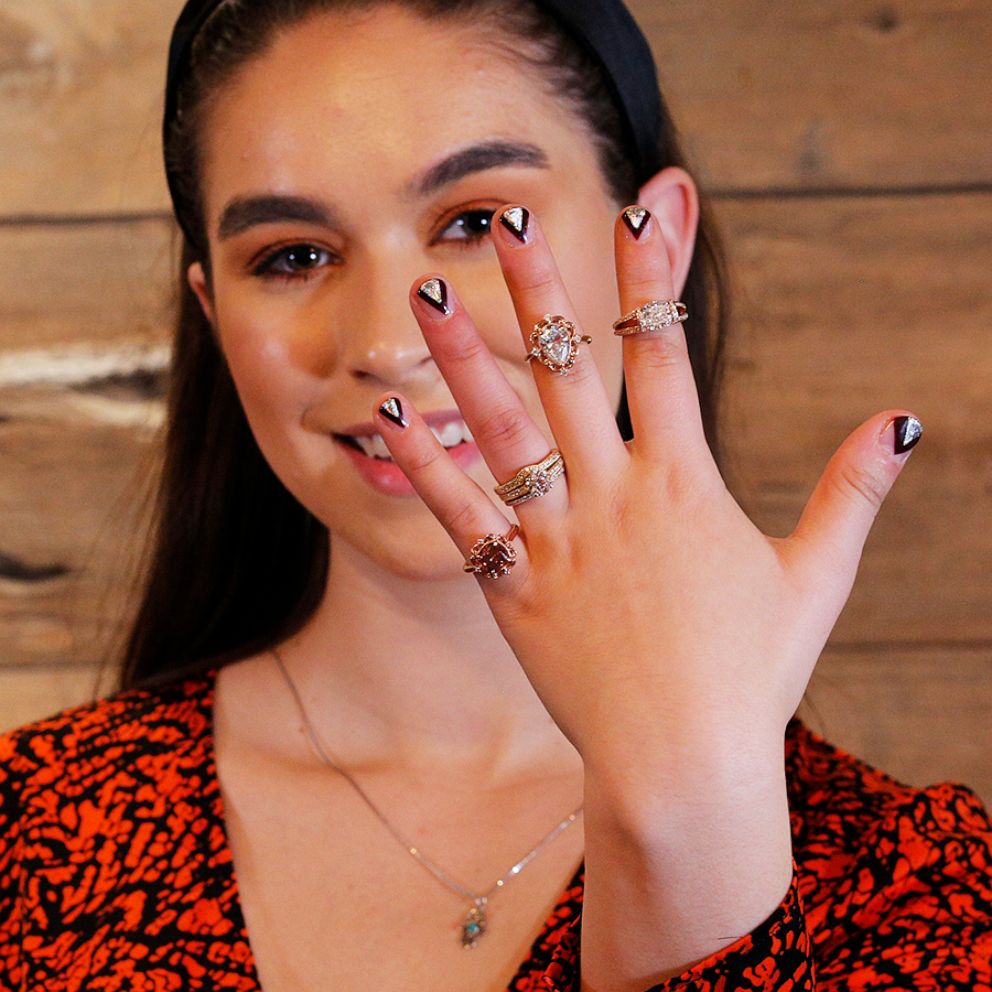


Shopping for a diamond for a special someone?
Before you make your purchase, you may want to learn more about lab-grown diamonds.
This option has grown in popularity and been seen on celebs such as Bindi Irwin.
A lab-grown diamond is formed by scientists who duplicate the diamond-growing process above ground.
The method takes around six to 10 weeks and claims to be more ethical and environmentally conscious than mining.
Lab-grown diamond company Great Heights says the only difference between its diamonds and mined diamonds is their origin.
"A lab-grown diamond is just as real and contains the exact same properties as one that is formed underground," Alexander Weindling, co-founder and CEO of Great Heights, told "Good Morning America."
Great Heights' diamonds are certified by the same gemologists at organizations that certify mined diamonds.
Gemological Science International is one of the labs that certifies lab-grown diamonds, with 13 labs across four continents.
"A diamond is a solid transparent crystalline form of carbon. Lab-grown diamonds have the same optical, chemical and physical properties as natural diamonds," Debbie Azar, president and co-founder of GSI, told "GMA."
"However, natural diamonds are formed over billions of years, hundreds of miles beneath the Earth’s surface under truly remarkable conditions. Natural diamonds are unique as no two are ever the same," Azar added.
If the individuality of the diamonds isn't as important to you, lab-grown diamonds are easily available at large stores such as Kay Jewelers, Zales, Jared and James Allen.
"Lab-created diamonds are an exceptional mix of master craftsmanship and science," said Colleen Rooney, the SVP and chief communications officer at Signet Jewelers. "Like natural diamonds, they are comprised of carbon, and exhibit the identical optical, chemical and physical properties as natural diamonds."
According to Great Heights, lab-grown diamonds are as much as 40% to 60% less expensive than naturally mined diamonds.
They are also viewed as more ethical and environmentally friendly because they bypass the traditional mining process.
"Consumers are looking for sustainable alternatives, even when it comes to diamonds," Ryan Bonifacino co-founder and president of Great Heights, said. "Lab-grown diamonds are environmentally conscious, ethical and cost-effective,"
Plus, there is a finite amount of diamonds that can be naturally mined from the earth. Since lab-grown diamonds are made in factories, there is essentially an endless supply, making them less expensive and less rare.
"Natural diamonds are more expensive than lab-grown diamonds of the same color, clarity, cut and carat," Azar said.
Azar said that visually, lab-grown diamonds look just like naturally mined diamonds.
"No one can identify the origin of a diamond just by looking at it," she added.
(MORE: Caboodles then and now: How this beauty kit started with Vanna White.)For some, there may be no clear-cut answer if a lab-grown diamond is better than a naturally mined diamond.
"Lab-grown diamonds offer consumers more options when they shop for diamonds," Rooney told "GMA."
Remember when shopping for the gem, one thing is important to get no matter where the diamond comes from.
"Lab-grown and natural diamonds are optically the same, so because of this, it’s important to get a diamond-grading report from a reputable independent laboratory," Azar said.